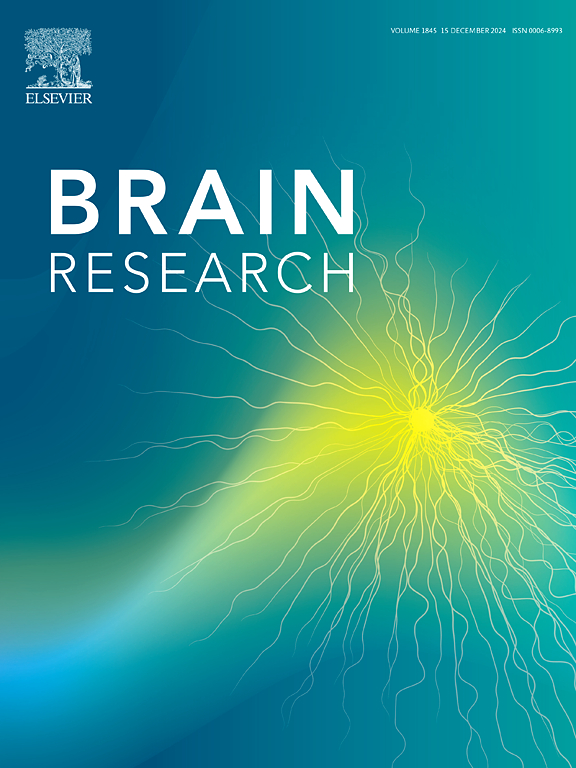激活食欲素受体2对雄性小鼠有抗焦虑作用
IF 2.7
4区 医学
Q3 NEUROSCIENCES
引用次数: 0
摘要
焦虑症是最常见的精神疾病。目前的药物可以暂时缓解焦虑,然而,它们也有副作用和安全问题,如依赖、自杀、过量等。因此,发现新的抗焦虑靶点至关重要。在精神疾病领域中,食欲素系统一直备受关注。越来越多的证据表明,食欲素受体1 (OX1R)作为新的抗焦虑靶点具有很大的潜力。然而,人们对食欲素受体2 (OX2R)在焦虑中的作用关注甚少。本研究通过行为学测试、立体定向手术和显微注射、病毒介导的OX2R敲低和药理学方法,我们发现:(1)腹腔注射OX2R拮抗剂Seltorexant可诱导雄性小鼠基线焦虑样行为增加。(2)腹腔注射OX2R激动剂YNT-185可降低雄性小鼠的基线焦虑样行为。(3)腹腔注射YNT-185可减轻吗啡戒断引起的雄性小鼠焦虑样行为。(4)静脉正中区微量注射YNT-185对雄性小鼠有抗焦虑作用。(5)病毒介导的VTA中OX2R敲低诱导雄性小鼠焦虑样行为。本文章由计算机程序翻译,如有差异,请以英文原文为准。
Activation of orexin receptor 2 plays anxiolytic effect in male mice
Anxiety disorders are the most common psychiatric illnesses. Present drugs can provide temporary relief for anxiety, however, they also come with side effects and safety concerns such as dependence, suicide, overdose and so on. Therefore, it is critical to discover new anxiolytic targets. An ongoing area of interest in the field of psychiatric diseases is the orexin system. Emerging body of evidences show that orexin receptor 1 (OX1R) has promising potential as novel anxiolytic target. However, little attention has been paid to orexin receptor 2 (OX2R) in anxiety. In this study, by using behavioral test, stereotaxic surgery and microinjection, virus-mediated knockdown of OX2R and pharmacological method, we found that: (1) Intraperitoneal injection of OX2R antagonist Seltorexant induced increased baseline anxiety-like behaviors in male mice. (2) Intraperitoneal injection of OX2R agonist YNT-185 reduced baseline anxiety-like behaviors in male mice. (3) Intraperitoneal injection of YNT-185 alleviated morphine withdrawal-induced anxiety-like behaviors in male mice. (4) Microinjection of YNT-185 into the VTA played anxiolytic effect in male mice. (5) Virus-mediated OX2R knockdown in the VTA induced anxiety-like behaviors in male mice.
求助全文
通过发布文献求助,成功后即可免费获取论文全文。
去求助
来源期刊

Brain Research
医学-神经科学
CiteScore
5.90
自引率
3.40%
发文量
268
审稿时长
47 days
期刊介绍:
An international multidisciplinary journal devoted to fundamental research in the brain sciences.
Brain Research publishes papers reporting interdisciplinary investigations of nervous system structure and function that are of general interest to the international community of neuroscientists. As is evident from the journals name, its scope is broad, ranging from cellular and molecular studies through systems neuroscience, cognition and disease. Invited reviews are also published; suggestions for and inquiries about potential reviews are welcomed.
With the appearance of the final issue of the 2011 subscription, Vol. 67/1-2 (24 June 2011), Brain Research Reviews has ceased publication as a distinct journal separate from Brain Research. Review articles accepted for Brain Research are now published in that journal.
 求助内容:
求助内容: 应助结果提醒方式:
应助结果提醒方式:


